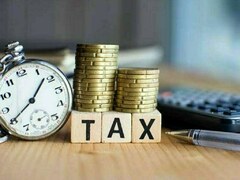After a lackadaisical end to FY20—the effect of which is more associated to economic downturn than covid—where many companies recording pre-tax losses, cement industry is circling back to the pre-crisis era and returning positive earnings. Cherat cement (PSX: CHCC) is certainly one of those companies where fortunes are restoring on the back of higher cement offtake, improved price retention due to a pronounced recovery in domestic demand, cost containment and a firm oversight on overheads (see graphs and table for figures).
Cherat has managed to grow in line with the industry and has kept its market share more or less intact. In 1HFY21, revenues grew encouragingly as the company shifted its focus from exports onto the rising demand of the domestic market. That also translated to higher overall retention as domestic prices are fairly higher than export prices (a difference of Rs240-250 per ton)—this phenomenon is irrespective of the movement in domestic prices which, incidentally, have also been rising over the past few months. Domestic demand has come just at the right time as border congestions and market lockdowns due to Covid-19 have made exports rather difficult. The company supplies exports to Afghanistan where sales have visibly declined from Cherat (in 1QFY21, exports to the Afghan market reduced by 52%) but domestic market has more than made up for that loss.

Estimated average revenue per ton for 1HFY21 grew 12 percent for Cherat comparing to last year which further highlights the falling share of exports in total sales and the company selling its brand at much higher prices in the domestic market. Comparatively, costs have not grown at all. In fact, while the total cost of production has remained the same (despite higher production), the company’s estimated average cost per ton sold is down—substantially by 9 percent. During this time, international coal prices have fallen—on average, South African coal price in 1HFY21 stood at $60.36 per ton declining by 11 percent from 1HFY20.
With the dual effect of higher revenues with virtually no change in costs, margins have tripled during the half year. The company’s borrowing costs that had ballooned to 13 percent of revenues in 1HFY20 also slashed down to 7.6 percent as policy rate became favourably low for borrowers. Meanwhile, expenses sustained at 4 percent of revenues which allowed the company to recover its earnings manifolds—in fact, profits during the half year are double of the losses the company made in 1HFY20.
The government’s construction package that has allowed builders to register existing (and new) projects with the FBR to avail tax and other benefits under the scheme is evidently lighting a fire in the belly of builders and developers. Private sector construction has resurged over the past few months—with stalled projects taking off—especially after a brief hiatus due to covid-related lockdowns. Meanwhile, multiple dams are either under construction or will soon begin construction while infrastructure projects under PSDP and ADP are also taking off. Higher spending in all these different areas will create multiple avenues for demand for cement manufacturers, specially those like Cherat located in the North zone. However, competition could become stiff as capacity utilization for the industry is peaking. There is an impending need for new expansions which have already started coming. Once Cherat’s capacity utilization crosses 90 percent, it may consider raising capacity (it completed its third line in 2019) without which it would have to sacrifice exports to meet domestic demand—which will ultimately work in its favor from a margin point of view.
























Comments
Comments are closed.